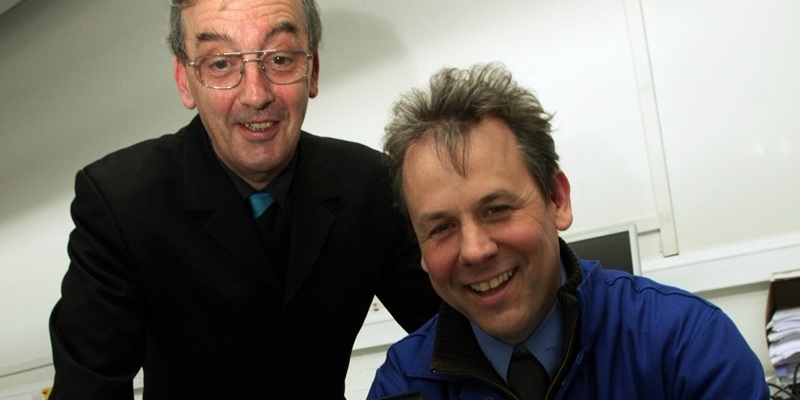Dundee College has developed an ingenious technology that is poised to transform the lives of millions in the poorest regions of Nepal.
For almost two years academics and students have worked on a project to convert solar power into electricity in the most cost-effective and efficient way.
The end result is the Munro solar battery charger with battery tester, which harnesses the sun’s energy to power a series of LEDs providing a reliable light source.
Its stripped-down design means it is relatively cheap to manufacture and efficient thanks to the workings of a clever circuit board developed by Professor Douglas Evans from Dundee.
The ground-breaking achievement could mean those living in rural areas of Nepal, who currently endure 12-14-hour blackouts every day, can enjoy a reliable power source.
The Munro is connected to a series of small solar panels. With a full charge it can power a “string” of 25 LEDs for 17 hours and 50 LEDs for eight hours.
It is capable of producing 24 watts of electricity, greatly out-performing similar products on the market, and may prove to be as significant as the wind-up radio developed by Trevor Baylis.ExcitedProject manager Jeff Imrie, a senior lecturer in engineering and welding at Dundee College, told us he was excited by its prospects.
He has recently returned from Nepal where a prototype of the device received a glowing response.
“The circuit is the key to everything,” said Mr Imrie. “This is really mark I of the Munro.
“We hope to develop a mark II which is capable of generating 96 watts of power. That would allow things like a mobile phone or a laptop to be charged.”
Professor Evans, a lecturer of physical science and engineering at Dundee College, believes the device will make a huge difference to some of the poorest families in Nepal and could go on to help countless others in third-world countries.
“We found out that a lot of people in Nepal are suffering burn injuries because at night they use candles in the home as there are so many power cuts,” he said.
Mr Evans also recently returned from Nepal where he has seen at first hand how the creation will make a difference.
“The project is now finished and the Scottish Parliament say it is good idea,” he said. “I am surprised at how well it came together.
“When we were working on it I wasn’t thinking too much on the practical benefits it would bring to the people of Nepal, but now that I have been out there and seen what it can do it really hit home.Brilliant”What I would love to see is for the Scottish Government to step in with funding so that we can send it to other parts of the world that would be absolutely brilliant.”
The Munro came about thanks to a new joint initiative the Skills for Employability project between colleges in the UK and Nepal.
Funded by the British Council, the project involves the Balaju School of Engineering and Technology, Bharatpur and Trade School, Nuwakot, as well as Dundee College, which have all worked closely together since 2008 to develop technical and vocational skill training for students.
In a selfless act, the Scottish college handed over the designs of the Munro to the Balaju School of Engineering and Technology, allowing them to patent the technology. It is now in their hands to ensure the device is manufactured and distributed to those who need it most.
Anil Bajracharya, college partnership project co-ordinator at the Balaju School of Engineering and Technology, said it had been an “immense pleasure” to work with the Dundee team.
“The joint product of Munro solar battery charger with battery tester is a milestone in terms of learning, shaping the skills of trainees, sharing knowledge and experience.
“We believe that this product will be an asset to Nepalese villagers as a source of electricity where hydro electricity is not reachable,” he added.
At the moment the technology is only equipped to produce light through solar energy, but a mark II of the design one that will provide the energy to power other electrical appliances such as laptops and mobile phones is currently under development.
A prototype of this is expected to emerge at some point this year.
